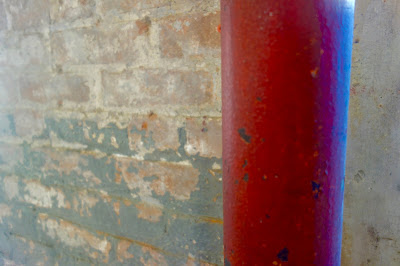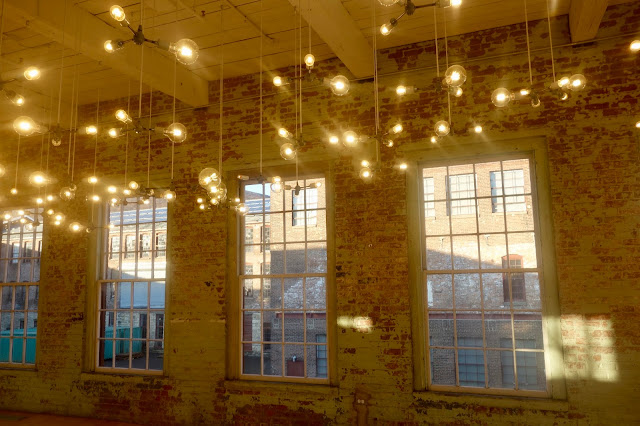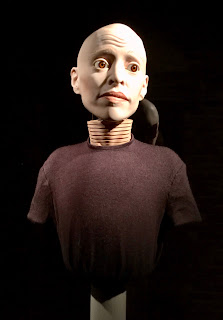MASS MoCA occupies a 19th century textile printing factory nearby.
It would have been interesting to see these trees hanging near the entrance in bloom. The leaves didn't have far to fall.
Built to harness water power, the museum sits on a peninsula formed by north and south branches of the Hoosic River. This window frames their fork.
The reflective sphere above turned the museum upside down.
Liz Glynn filled a warehouse-like gallery with "The Archaeology of Another Possible Future." Don't ask me what it means, though.
Elizabeth King went in a completely different direction. "Radical Small" barely took up any space at all, though there was plenty to spare in the darkened, spotlit gallery.
Tanja Hollander travelled the world to photograph all of her Facebook friends, more than 600 people. Visitors are asked to jot down what friendship means to them.
Because I'd recently seen "Heart of a Dog," a film by Laurie Anderson (highly recommended!), I recognized her pooch as soon as I walked into a gallery filled with huge, monochrome canvases. Too bad we didn't have reservations to see her virtual reality work.
Magda said "Lolabelle in the Bardo" was her favorite exhibit.
But that was only until she experienced James Turrell's "Into the Light." I snapped this before learning that photographs of his colorful trippy, installations--including both strobe and ultraviolet--weren't permitted.
Jenny Holzer's work, more political than most, examined military interrogation.
A docent informed us that these bones were human, although they didn't belong to interrogation victims. Did you know that you can contribute your body to art as well as science?
There was plenty of work by other familiar artists as well, including Robert Rauschenberg,
Louise Bourgeois
and Sol Lewitt.
We finally had to send out a search party for Thom, who was missing in action for most of the afternoon.
They found him in his car. He could have been tanning instead!








































No comments:
Post a Comment